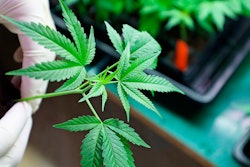Food supply chains have been in the news over the past few years, but for all the wrong reasons. The typical narrative focuses on an event involving a supplier or loss of quality control that reaches the consumer and results in an extremely bad dose of public relations for the retailer or brand that sold the tainted product.
Things can get really bad when the event isn’t confined to a single product and impacts dozens of customers across entire regions. The situation Chipotle faced back in 2015 is one of the higher profile examples that threatened the very existence of the company. Chipotle has still not fully recovered in the three years since the incidents hit the mainstream news.
In food supply chains, contamination and quality control incidents are all priority-one alerts for the involved companies, there’s no denying that. Often, one of the key solutions identified is “traceability” to enable the company to quickly identify the source of the problem and take smart, corrective actions. This is why many food companies are pioneering advanced levels of supply chain visibility at a multi-tier level (from store, to logistics provider, to distributor, to farmer, to soil, to fertilizer, to seeds), which is not an easy task.
Consumers increasingly demand their own version of traceability so they can understand what they are buying and feeding their families. While this can manifest itself on a product label, or a menu, or a website, today’s consumers want technology via their mobile devices. Other services such as Amazon, Uber, or Yelp have trained people to expect a lot of information about their purchase — whether it’s the location and color of the car that’s going to pick them up, or 2,000 reviews of the restaurant they’re going to.
Companies must provide robust, accurate information about a purchase, or people will seek other options. Technology innovation is part of the brand experience, and the supply chain aspect is not immune.
A recent survey by YouGov and Infor looked at consumer supply chain expectations from 6,000 adults, across all demographics in North America and Europe, and found that 80 percent of them expect some kind of supply chain visibility experience of their own. They want to know where their orders are and they want to know when those orders will arrive.
Additionally, the survey showed that consumers are demanding a supply chain experience not just related to their e-commerce orders, but across different categories. Grocery was identified as the number-one vertical industry in which consumers would seek an alternative if the brand couldn’t get them the product when expected.
People who once had no problem heading down to the local market to pick out their staples for the week are now saying they will switch brands 60 percent of the time if the store fails to meet their expectations on delivering an order for day-to-day needs. Purchasing habits are changing and supply chain expectations are going up to a level that few companies are prepared to meet.
For food companies, the investments in traceability and/or supply chain visibility solutions are really a matter of survival. First, the requirement to have firm quality control demands a focus. Second, visibility solutions enable companies to run their supply chains at a much more efficient and agile level, which can drive significant savings. And now, that same technology can be pointed at consumers as part of the brand experience — a differentiated premium value-add that most companies will struggle to provide because so few have it for their own operations.
The big challenge with any kind of visibility solution is data quality. It is very difficult to collect and normalize all the information because it’s coming from all of the various partners. This is not easy, especially when the need is to cover multiple tiers of the supply chain — all the way down to the farm. This is the number-one reason companies of all types struggle with visibility initiatives.
For any supply chain visibility solution to work, there must be a network dimension to the solution, which can link partners around the world, collect the necessary data, normalize it and post it into the center of the network so all parties see and operate based on the same information. Without a network focus, supply chain visibility systems are only capable of providing disconnected silos of information and not the cool, visual end-to-end view that executives and customers would expect.
It would be a far greater crime for companies to offer consumers a solution that didn’t work. Imagine using Uber if 30 percent of the time the wrong car showed up, or it arrived 10 minutes later than the app said. You would switch. Providing an accurate picture of the status of a customer order, designed for mobile apps, rendered beautifully on maps, with alerts and accurate ETAs is the expectation. This includes people such as Mrs. Smith, who’s waiting for her avocados to arrive so she can make her guacamole dip for her party.
With the brand experience now becoming part of the supply chain technology experience, there’s good news for food companies. The ongoing struggle to get proper investments and executive attention is only going up. While unexpected disasters should (and do) get constant attention, the new opportunistic aspect and potential for supply chain visibility may finally become reality. Then, we will begin to see the other 95 percent of companies move into the realm of sight and control.
Greg Kefer is Vice President of Marketing at Infor























